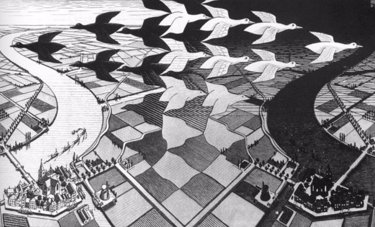What is Temperament?
Temperament is the part of personality that we are born with. It reflects biological, hard-wired tendencies and preferences that make up our outlook and interests. As we develop, our environment and experiences further shape our patterns of behavior.
For example, Muhammad Ali, Mark Twain, Alexander Calder, Salvador Dali, and Victor Borge all had ENTP temperaments at birth, but their environments and experiences led them to different careers. Regardless of their learned skills, each of them used their ENTP temperament to be innovative, inventing new methods to achieve their goals.
Muhammad Ali introduced the “Ali Shuffle” and the rope-a-dope strategy to become the first boxer to win three world heavyweight champion titles.
Mark Twain was the first author to write dialogue using incomplete words, slang, and broken grammar to capture the way people actually spoke.
Alexander Calder invented wire sculptures and sculptures that moved.
Salvador Dali created strange images in his art and made a career out of looking peculiar and behaving in odd ways.
Victor Borge combined his talent for classical music with silly behavior and witty jokes to create unique entertainment.
The Spirit Within
The other part of personality is based on character, which is a result of the choices we make as we go through life. Ted Bundy was an extreme example of an ENTP lacking in moral qualities. He devised a method of using charm and the appearance of being injured and needing help to lure women to locations where he could kill them. He also studied law enforcement methodologies and used that knowledge to evade capture by using disguises, killing without using a gun, minimizing physical evidence at crime scenes, and committing crimes in many different locations across the United States.
We are all spiritual entities, having physical experiences while our bodies are alive. Think of it this way:
Physical bodies are like hardware.
Temperament is like firmware, permanent software that has read-only memory. It can be used, but cannot be changed.
Character is like software we develop ourselves, and can be modified if desired.
Temperament Strengths and Weaknesses
For every strength that we have, we have a weakness in the opposite direction. If you are in awe of a natural talent someone has, please try to understand and accept their shortcomings. It is not a failure to have the same weaknesses throughout our lives. We need only look for opportunities to use our strengths.
For instance, people who seek closure tend to plan ahead and complete assignments on time, but they are not good at adapting to changes they hadn't prepared for. On the other hand, people who do not seek closure are spontaneous and able to make the best of changing situations, but they have trouble completing assignments on time or sticking to a plan.
We can use our natural gifts in areas where they are usually found, or in unexpected areas. For example, ISFP Composers excel at creating pleasant compositions, so there are many famous ISFP artists. But what happens when INTJ Masterminds are artists? They have analytical minds and feel compelled to use that strength. The results can be seen in the art of Georges Seurat, who invented a new technique of painting called Pointillism. Or in the art of M.C. Escher, who was able to visualize the geometry of space and negative space to create startling effects.



